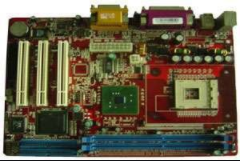About component inspection after SMT PCB assembly
With the advancement of circuit assembly technology and the rapid increase in demand for electronic products based on PCB circuit boards, how to accurately detect surface mount components SMA, such as the knowability, measurability, and process control degree of the assembly quality of components or products, etc. It has become the focus of the most attention of circuit assembly technology and quality engineers, and then vigorously carried out related research and produced a type of automatic inspection technology and equipment for circuit assembly boards such as online testing. Especially under the technical support of computer software and hardware, network communication, instrument bus, test and measurement, the SMA detection system has also made a great leap. At present, SMA's detection focus has been focused on the self-inspection of circuits and chip circuits, assembly and welding process structure testing and process control technology, and presents a trend towards high precision, high speed, fault statistical analysis, networking, remote diagnosis, virtual testing, etc. The direction of development.
1. Component inspection content after assembly

After the surface assembly is completed, the final quality inspection of the surface assembly components is required. The inspection content includes: solder joint quality, such as bridging, virtual soldering, open circuit, short circuit, etc.; component polarity, component type, value exceeding standard Weigh the allowable range, etc.; evaluate the performance of the system composed of the entire SMA component at clock speed, and evaluate whether its performance can meet the design goals.
LED lighting patch processing 005
2. Component inspection method after assembly
1) Online needle bed test method ICT
In the actual production of SMT, in addition to the unqualified solder joint quality, which will lead to soldering defects, the wrong polarity of the component, the wrong component type, and the value exceeding the nominal allowable range will also cause defects in the SMA. ICT is a contact test method. Therefore, the performance test can be performed directly through online test ICT in production, and related defects that affect its performance can be checked at the same time, including bridge connection, virtual soldering, open circuit, wrong component polarity, and value out of tolerance. Etc., and adjust the production process in time according to the exposed problems.
(1) Testing preparation means that testing personnel, boards to be tested, testing equipment, testing documents, etc. should all be prepared.
(2) Program writing refers to setting test parameters and writing test programs.
(3) The test procedure refers to the inspection of the test procedure.
(4) Testing refers to testing under the drive of a testing program to check for various defects that may exist.
(5) Debugging means that some steps will be judged to be invalid due to the choice of test signal or the circuit of the component under test when the programmed program is actually tested, that is, the measured value exceeds the deviation limit and must be debugged.
2) Flying probe test method
Flying probe testing belongs to contact testing technology, and it is also one of the testing methods in production. The flying probe test uses 4 to 8 independently controlled probes, and the unit under test (UUT) is transported to the testing machine through a belt or other UUT transmission system, and then fixed. The probe of the tester contacts the test pad and the via hole to test a single component of the UUT. The test probe is connected to the driver and sensor to test the components on the UUT through the multiplex system. When a component is being tested, other components on the UUT are electrically shielded by the prober to prevent reading interference. The flying probe test is the same as the needle bed test. It can also perform electrical performance testing, and can detect defects such as bridging, virtual soldering, open circuit, wrong component polarity, and component failure. According to its test probe, it can perform omni-directional angle test, the minimum test gap can reach 0.2 mm, but its test speed is slow. The flying probe test is mainly suitable for SMAs that are not suitable for ICT, such as high assembly density and small pin spacing.
3) Functional test method
Although a variety of new inspection technologies emerge in endlessly, such as AOI, X-ray inspection, and online testing of electrical properties based on flying probes or needle beds, they can effectively find various defects and failures that occur during the PCB board assembly process, but they cannot be evaluated. Whether the system composed of the entire circuit board can operate normally, and the functional test can test whether the entire system can achieve the design goal. It takes the surface mount board or the tested unit on the surface mount board as a functional body, inputs electrical signals, and then detects the output signal according to the design requirements of the functional body. This test is to ensure that the circuit board can work normally according to the design requirements. Therefore, functional testing is the main method to detect and ensure the final functional quality of the product.